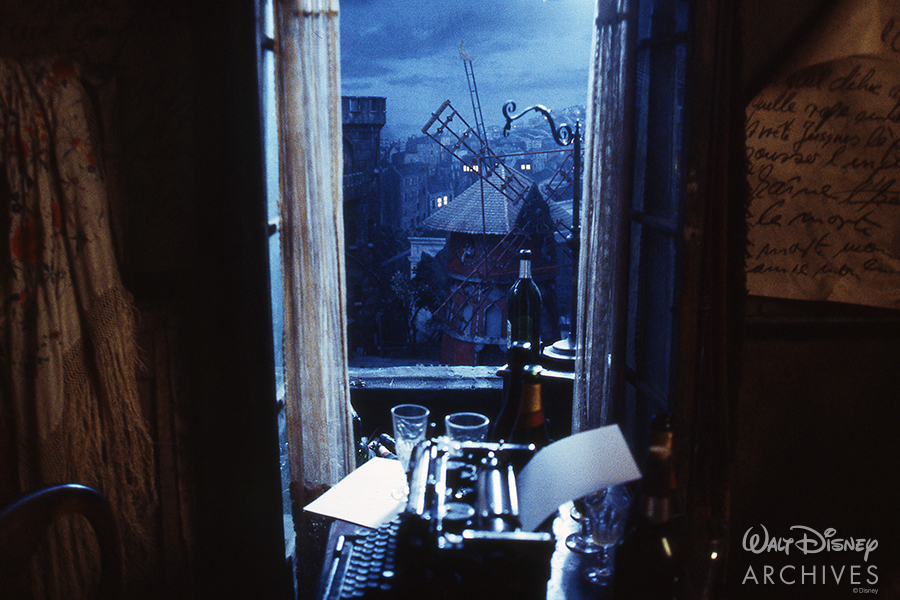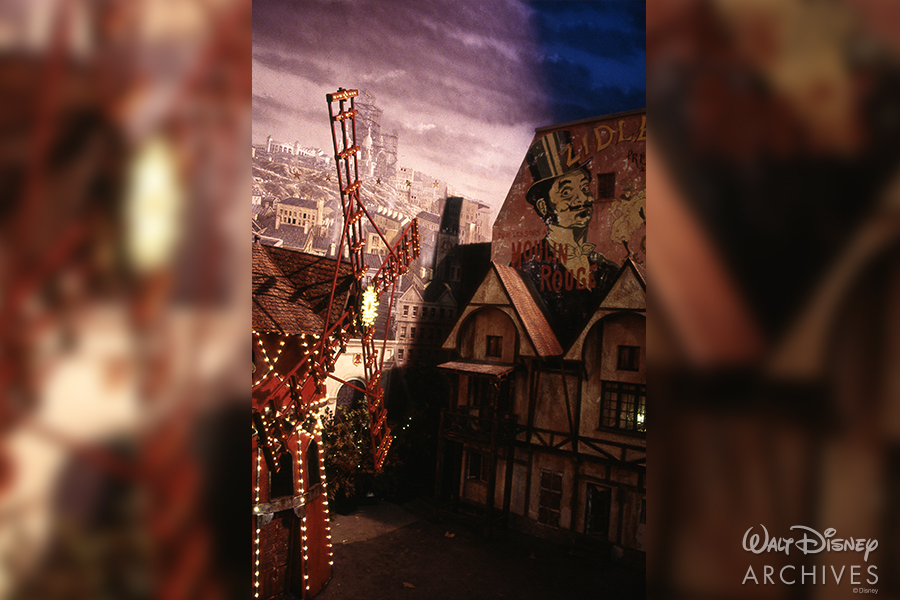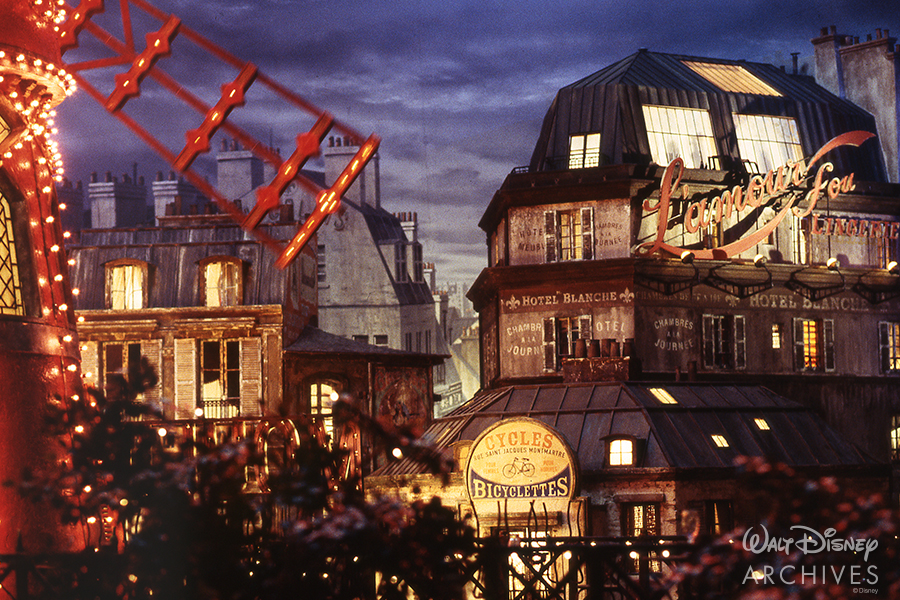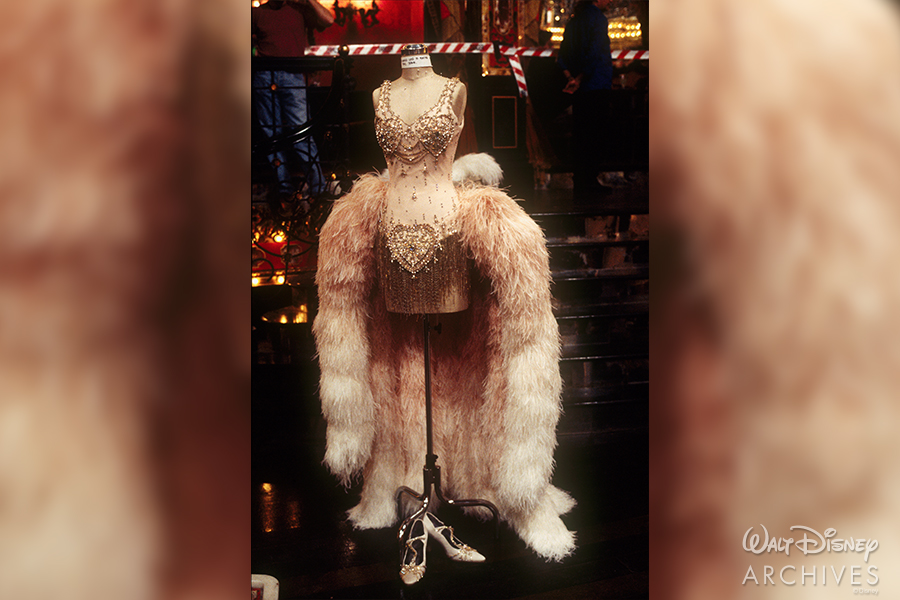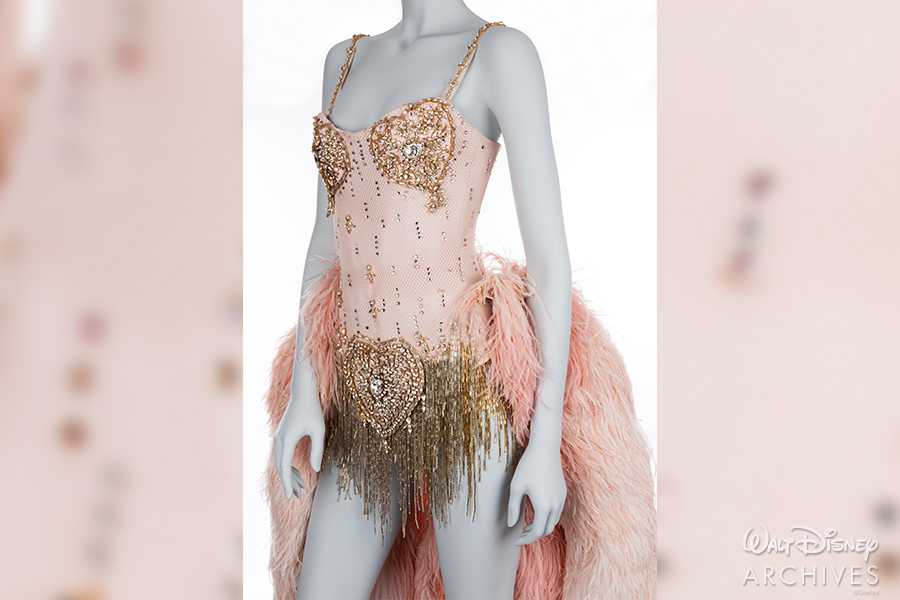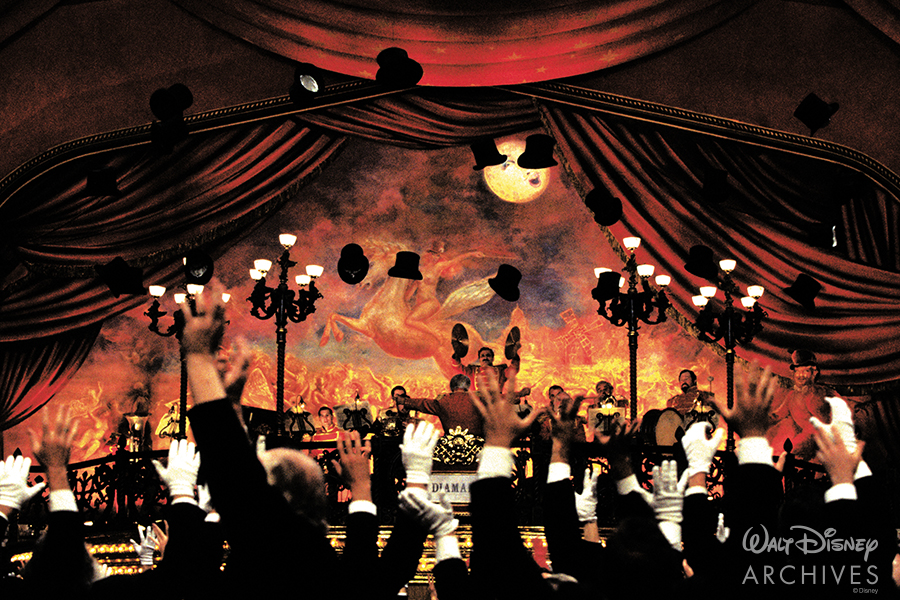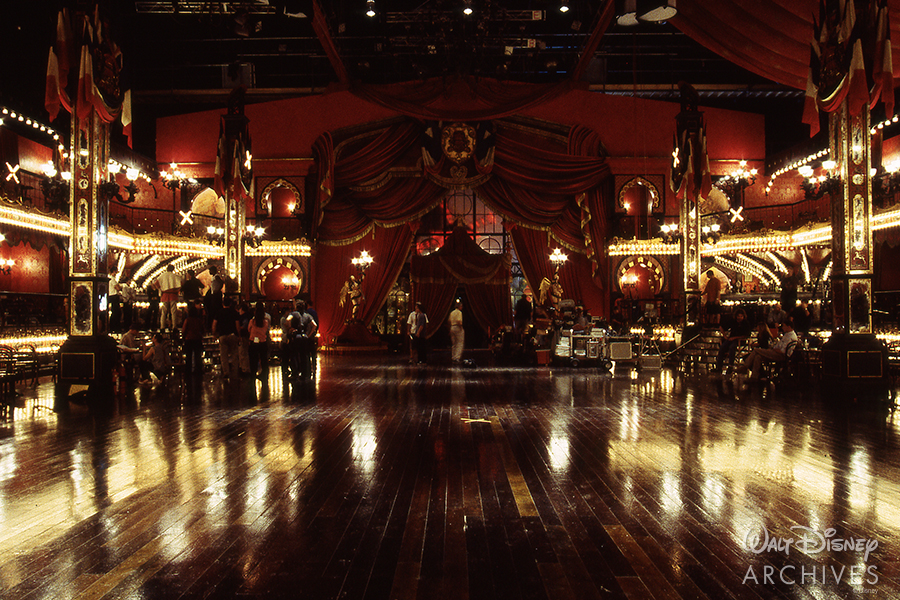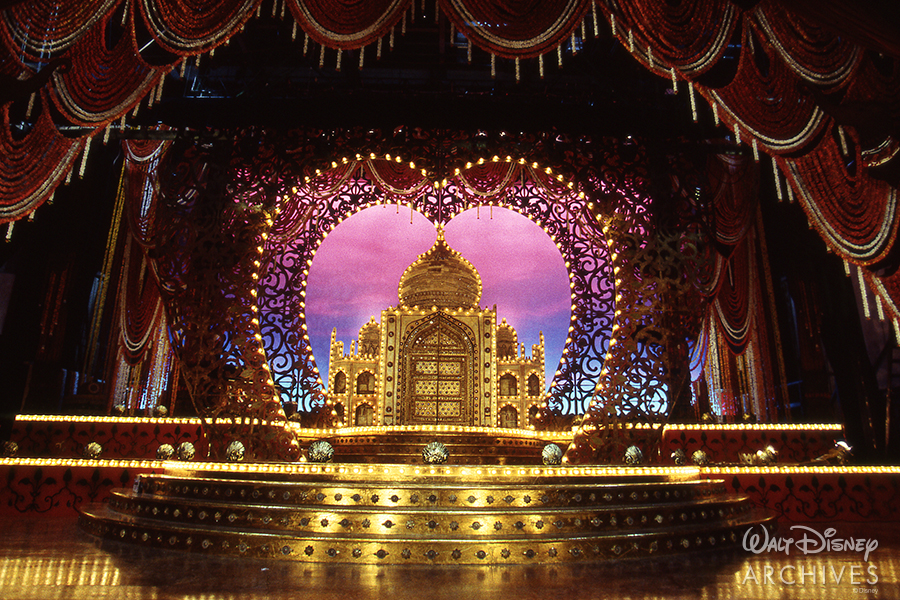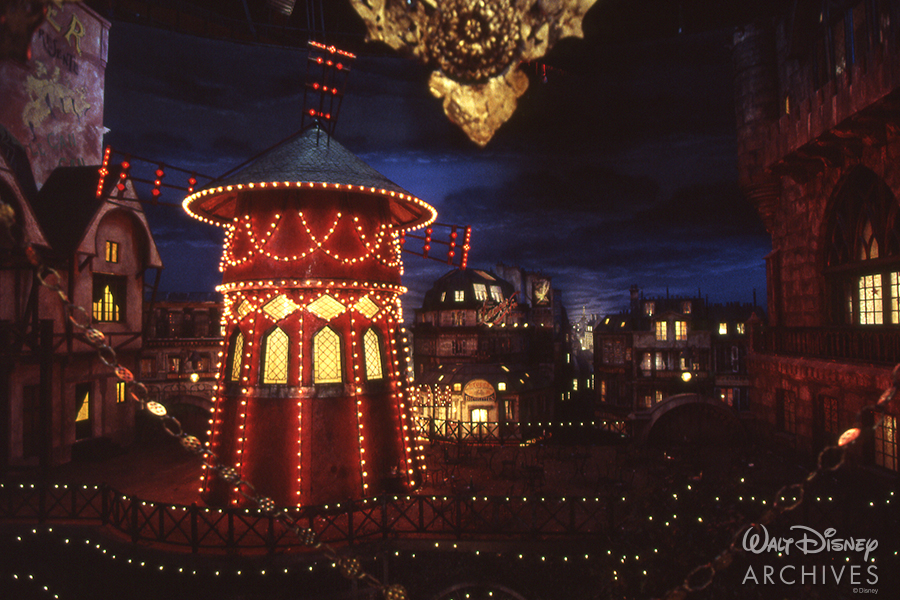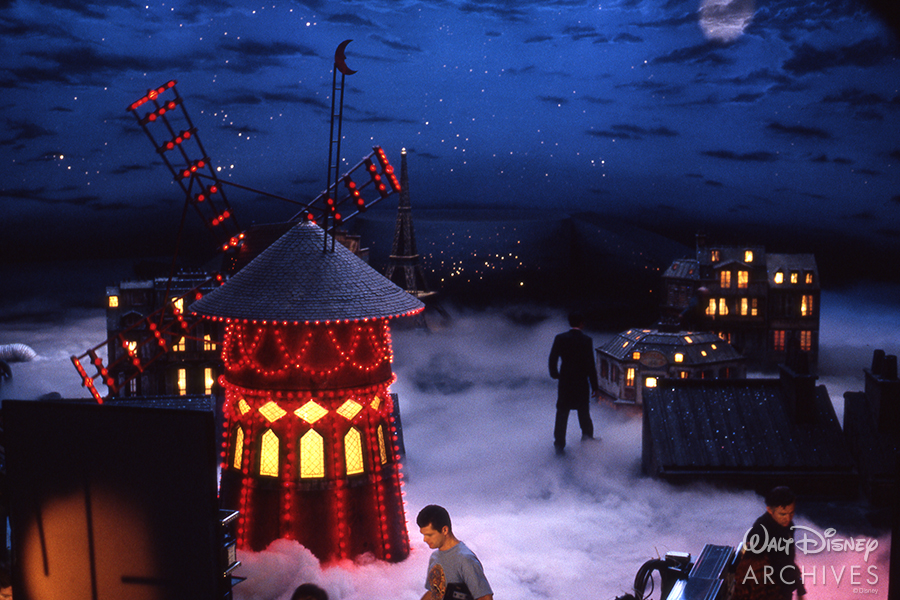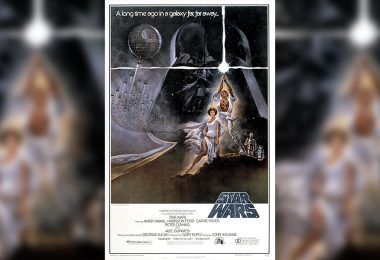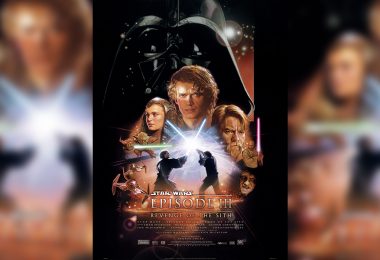By Kevin Kern, Walt Disney Archives
Freedom. Beauty. Truth. Love. All maxims that drive and guide the protagonists at the heart of director Baz Luhrmann’s splashy movie musical, Moulin Rouge (2001).
Set amidst a bustling and bohemian Paris circa 1900, the film boasts a gorgeous design sense that helps to contextualize its characters while also providing a rapt stage for the contemporary pop tunes featured therein. When ingeniously blended together, these elements work in tandem to create a most unique motion picture experience, one that rests at the foot of both the comic and the tragic.
Luhrmann’s euphorically lofty, dream-world-like vision for this dramatic setting effortlessly holds firm as a hallmark example of “Red Curtain” cinematic style. “One of the characteristics of…‘Red Curtain’ films is the use of classic cinema references,” reflected the director at the time of the film’s initial release. “In Moulin Rouge we have utilized this mechanism both in making reference to classic hair styles and costume silhouettes of the great divas of the ’40s and ’50s. Marlene Dietrich (Blue Angel), with a sprinkle of Cabaret and a nod to Rita Hayworth in Gilda. It is this constant referencing and re-referencing that we hope allows a modern audience to decode the historical setting. The ease with which the audience understands the story is crucial. In this musical we are not revealing the characters or plot slowly and invisibly, but quickly and overtly.”
By blending rich costume and production design, the film presents a Parisian world governed both by creativity and excess, presenting imagery that seeks to inspire and move viewers in meaningful and impassioned ways. “Most cinematic naturalism puts the audience into a dream state so that they may observe reality, if you like, through a key hole,” Luhrmann observed. “Whereas we employ a constant device that awakens the audience and reminds them that at all times they are watching a film, in which they are impelled to participate.” Almost as if we are at the Moulin Rouge ourselves, we, the viewers, experience the film simultaneously as both a theatrical production and cinematic experience.
Production designer Catherine Martin specifies that Luhrmann’s vision for this fantastical approach to framing the world of the film was also “about manipulating the elements that existed in [that] world, so they read [in the] now, so that a modern audience can access this period world. Baz wanted us to create a world in a style he dubbed ‘real artificiality.’ A ‘created’ Paris in which the musical of his invention would sit comfortably. A place where breaking out in song would feel natural.”
“We treated this world in a very self-consciously theatrical way,” Martin continues. “Baz wants a completeness to the world, and every design detail tried to reinforce this.” Looking back on these creative aspirations as the film nears its 20th anniversary, what’s abundantly clear about the power of the filmmakers’ approach is that it helped to cement the film—perhaps above all else—as a contemporary classic by pushing daring design to dreamy effect.




